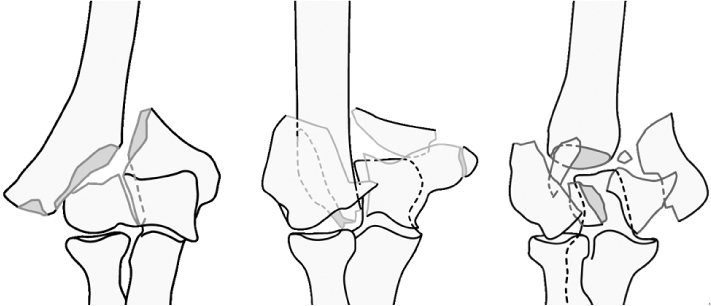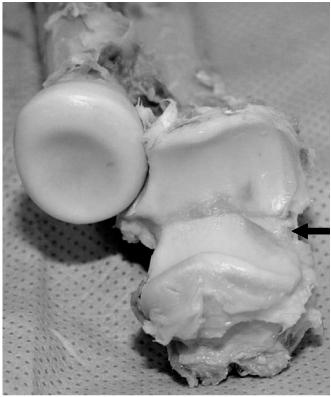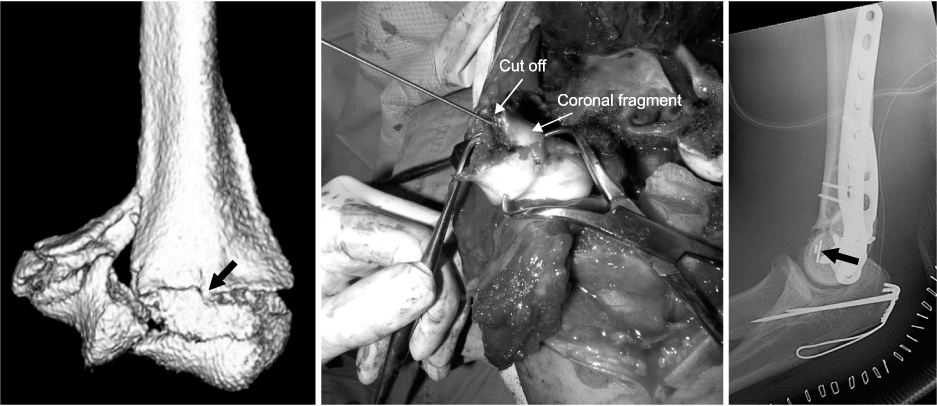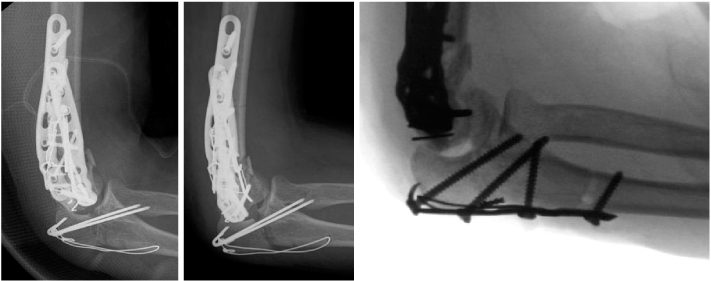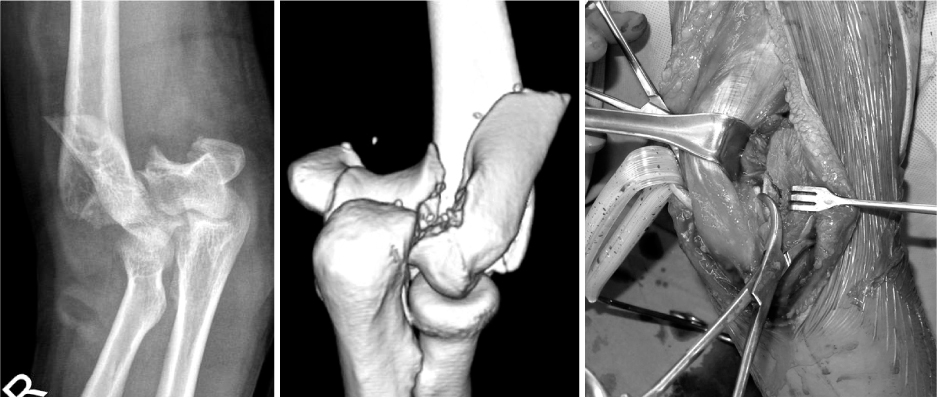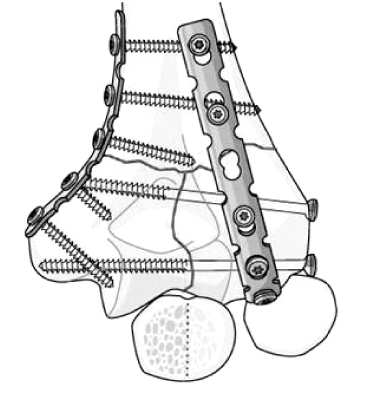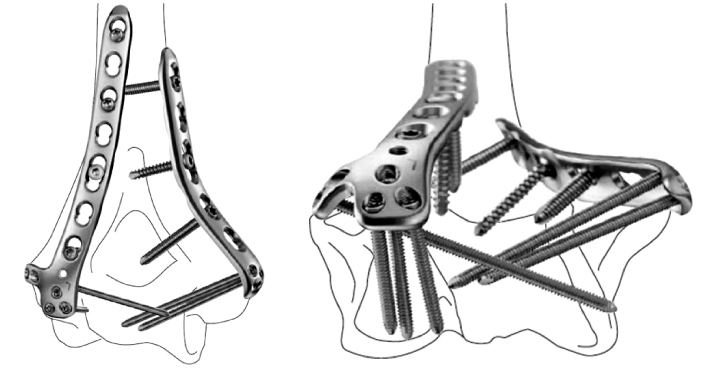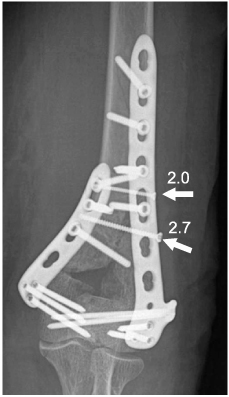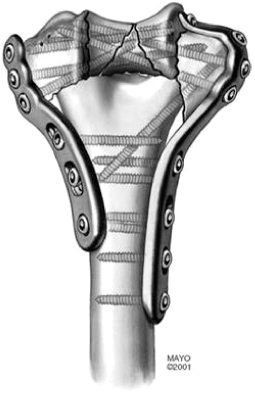J Korean Fract Soc.
2012 Jul;25(3):223-232.
Treatment of Distal Humeral Fractures
- Affiliations
-
- 1Department of Orthopedic Surgery, Korea University Medical Center Guro Hospital, Seoul, Korea. jkoh@korea.ac.kr
Abstract
- No abstract available.
MeSH Terms
Figure
Reference
-
1. Arnander MW, Reeves A, MacLeod IA, Pinto TM, Khaleel A. A biomechanical comparison of plate configuration in distal humerus fractures. J Orthop Trauma. 2008. 22:332–336.
Article2. Athwal GS, Rispoli DM, Steinmann SP. The anconeus flap transolecranon approach to the distal humerus. J Orthop Trauma. 2006. 20:282–285.
Article3. Brouwer KM, Guitton TG, Doornberg JN, Kloen P, Jupiter JB, Ring D. Fractures of the medial column of the distal humerus in adults. J Hand Surg Am. 2009. 34:439–445.
Article4. Bryan RS, Morrey BF. Extensive posterior exposure of the elbow. A triceps-sparing approach. Clin Orthop Relat Res. 1982. (166):188–192.
Article5. Ebraheim NA, Andreshak TG, Yeasting RA, Saunders RC, Jackson WT. Posterior extensile approach to the elbow joint and distal humerus. Orthop Rev. 1993. 22:578–582.
Article6. Galano GJ, Ahmad CS, Levine WN. Current treatment strategies for bicolumnar distal humerus fractures. J Am Acad Orthop Surg. 2010. 18:20–30.7. Gerwin M, Hotchkiss RN, Weiland AJ. Alternative operative exposures of the posterior aspect of the humeral diaphysis with reference to the radial nerve. J Bone Joint Surg Am. 1996. 78:1690–1695.8. Holdsworth BJ, Mossad MM. Fractures of the adult distal humerus. Elbow function after internal fixation. J Bone Joint Surg Br. 1990. 72:362–365.9. Imatani J, Ogura T, Morito Y, Hashizume H, Inoue H. Custom AO small T plate for transcondylar fractures of the distal humerus in the elderly. J Shoulder Elbow Surg. 2005. 14:611–615.10. John H, Rosso R, Neff U, Bodoky A, Regazzoni P, Harder F. Operative treatment of distal humeral fractures in the elderly. J Bone Joint Surg Br. 1994. 76:793–796.11. Jupiter JB. Complex fractures of the distal part of the humerus and associated complications. Instr Course Lect. 1995. 44:187–198.12. Jupiter JB, Barnes KA, Goodman LJ, Saldaña AE. Multiplane fracture of the distal humerus. J Orthop Trauma. 1993. 7:216–220.
Article13. Kwasny O, Maier R. The significance of nerve damage in upper arm fractures. Unfallchirurg. 1991. 94:461–467.
Article14. Levy JC, Kalandiak SP, Hutson JJ, Zych G. An alternative method of osteosynthesis for distal humeral shaft fractures. J Orthop Trauma. 2005. 19:43–47.
Article15. McKee MD, Jupiter JB. A contemporary approach to the management of complex fractures of the distal humerus and their sequelae. Hand Clin. 1994. 10:479–494.
Article16. McKee MD, Jupiter JB, Bamberger HB. Coronal shear fractures of the distal end of the humerus. J Bone Joint Surg Am. 1996. 78:49–54.
Article17. Nauth A, McKee MD, Ristevski B, Hall J, Schemitsch EH. Distal humeral fractures in adults. J Bone Joint Surg Am. 2011. 93:686–700.
Article18. O'Driscoll SW. The triceps-reflecting anconeus pedicle (TRAP) approach for distal humeral fractures and nonunions. Orthop Clin North Am. 2000. 31:91–101.
Article19. O'Driscoll SW. Parallel plate fixation of bicolumn distal humeral fractures. Instr Course Lect. 2009. 58:521–528.
Article20. O'Driscoll SW, Sanchez-Sotelo J, Torchia ME. Management of the smashed distal humerus. Orthop Clin North Am. 2002. 33:19–33.
Article21. Pankaj A, Mallinath G, Malhotra R, Bhan S. Surgical management of intercondylar fractures of the humerus using triceps reflecting anconeus pedicle (TRAP) approach. Indian J Orthop. 2007. 41:219–223.
Article22. Perry CR, Gibson CT, Kowalski MF. Transcondylar fractures of the distal humerus. J Orthop Trauma. 1989. 3:98–106.
Article23. Remia LF, Richards K, Waters PM. The Bryan-Morrey triceps-sparing approach to open reduction of T-condylar humeral fractures in adolescents: cybex evaluation of triceps function and elbow motion. J Pediatr Orthop. 2004. 24:615–619.
Article24. Ring D, Jupiter JB. Complex fractures of the distal humerus and their complications. J Shoulder Elbow Surg. 1999. 8:85–97.25. Ring D, Jupiter JB. Fractures of the distal humerus. Orthop Clin North Am. 2000. 31:103–113.26. Schwartz A, Oka R, Odell T, Mahar A. Biomechanical comparison of two different periarticular plating systems for stabilization of complex distal humerus fractures. Clin Biomech (Bristol, Avon). 2006. 21:950–955.
Article27. Tak SR, Dar GN, Halwai MA, Kangoo KA, Mir BA. Outcome of olecranon osteotomy in the trans-olecranon approach of intra-articular fractures of the distal humerus. Ulus Travma Acil Cerrahi Derg. 2009. 15:565–570.
Article28. Windolf M, Maza ER, Gueorguiev B, Braunstein V, Schwieger K. Treatment of distal humeral fractures using conventional implants. Biomechanical evaluation of a new implant configuration. BMC Musculoskelet Disord. 2010. 11:172.
Article29. Zalavras CG, Vercillo MT, Jun BJ, Otarodifard K, Itamura JM, Lee TQ. Biomechanical evaluation of parallel versus orthogonal plate fixation of intra-articular distal humerus fractures. J Shoulder Elbow Surg. 2011. 20:12–20.
Article
- Full Text Links
- Actions
-
Cited
- CITED
-
- Close
- Share
- Similar articles
-
- Anatomic fit of precontoured extra-articular distal humeral locking plates: a cadaveric study
- Orthogonal Locking Compression Plate Fixation for Distal Humeral Intraarticular Fractures
- Elbow Function and Complications after Internal Fixation for Fractures of the Distal Humerus
- The Fractures of Humerus Shaft and Medial Epicondyle by Arm Wrestling
- Torsional Characteristics between Single and Double Distal Screws in the Interlocking Intramedullary Nailing of Humeral Shaft Fracture



